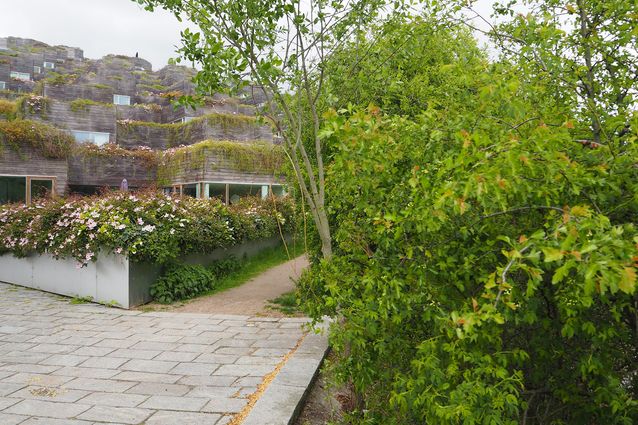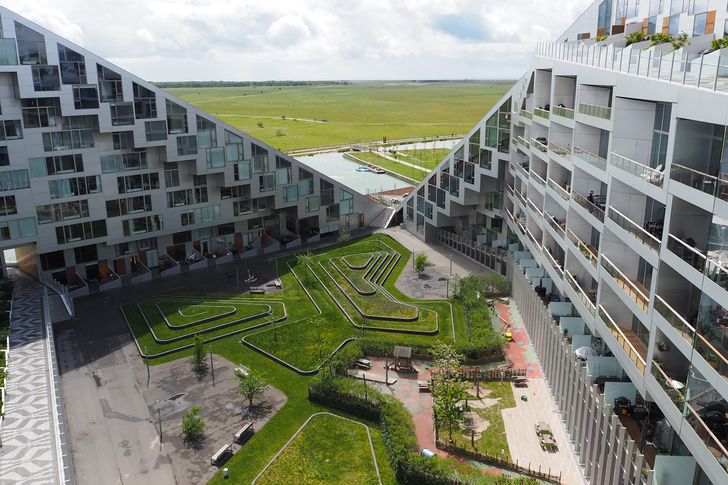[ad_1]
The communities we live in have the potential to reflect our echelon in society, as well as our cultural or socioeconomic backgrounds. But what if we could consciously choose to belong to a community that is reflective our desired lifestyle, values and beliefs instead? Together by Design: The Art and Architecture of Communal Living by William Richards considers the architectural, social and health advantages of living in a communal setting.
Image:
Courtesy of Chronicle Books
The book begins with Richards winding back the clock to explore the intrinsic, primal nature and desire of humans to belong to a tribe. The author examines the evolution from living in groups to residing in a more intimate, sequestered and often familial setting, as well as the consequences of such a transition – namely the contemporary paradox of individuals reporting a feeling of isolation despite living in a city full of people.
“Of course, deep down (and for economic, social or familial reasons), we have always been pack animals who band together and prefer to live together, despite the so-called virtues of individuation and self-actualization in twentieth-century psychology,” Richards said.
“In other words, we are not innately solitary creatures, but modernity has made us this way. There is evidence and commentary for at least a century about this shift away from communal living to self-selecting isolation, and back again.”
Richards clears up any confusion surrounding the semantics of the terms cohousing and co-living, which he says are often used interchangably despite having different meanings. He defines co-living as a community of “unaffiliated individuals renting in a non-ownership position,” and is commonly a short-term living arrangement. Cohousing, in contrast, “is a long-term arrangement for affiliated individuals in alignment on beliefs, interests, and values; who regularly share meals, responsibilities, resources and their own time; and who are committed to decision-making processes aimed at balancing individual ideas in service to the greater good of the community.”
While both terms fall under the umbrella of what is referred to as “intentional community,” cohousing is more intentional than co-living. There are other types of intentional communities, such as Trident Lakes in Texas, which is a doomsday prepping community; university dormitories; retirement villages and so forth.
8 House by Bjarke Ingels Group, Ørestad, Copenhagen (2010).
Image:
Katelin Butler
Inadequate housing supply and affordability, a desire to live according to certain values, objectives or beliefs, financial strain, a social desire for companionship, and age often act as the catalyst for someone joining or establishing an intentional community.
Together by Design features images, renders, site and floor plans of communal living projects from around the world. Through the lens of architecture, public policy, culture, lifestyle and design, the book offers a comprehensive account of both historical and contemporary collective housing alternatives. The Arcosanti community in the United States, designed by Paolo Soleri; the Suderbyn Permaculture Ecovillage in Sweden, and 8 House in Denmark, designed by Bjarke Ingels Group are just some of the projects mentioned.
Fair Oaks Ecohousing in California, designed by McCamant and Durrett, demonstrates how architecture can be used as a vehicle to meet the desired values, ethos and objectives of its community, who, in this case, prioritize environmentalism and sustainability. A central, pedestrian-only lane connecting each house, prompts community members to eschew their vehicles. A common house with shared kitchen, music room and other amenities further encourages members to spend time onsite rather than contribute to transport emissions.
Many of the examples highlighted in the book preference choice through design, an approach that grants residents the ability to choose how visible or invisible they want to be by providing a mix of private, semi-private and shared spaces. “As social architecture, living together is a design ethic that demands a balance between the barriers of private life and the commons of social life – two spheres that must accommodate each other, as we must all accommodate one another, for a greater good,” Richards said.
A significant portion of the book explores intentional communities as a determinant for improving the life quality of senior citizens. Richards explains that by being in an active, social community, senior citizens are more likely to “overcome depressive symptoms, their cognitive decline slows markedly, and their motor functions remain stronger for longer through age.” Furthermore, he asserts that by creating communities that are more user friendly, accessible and better able to accommodate older individuals needs, they may be more inclined to move to such a community, therefore increasing housing supply for younger generations.
The models presented in Together by Design demonstrate how the architecture we construct can provide the framework for realizing intentions and ultimately enable individuals to live what they believe. This way of living has the potential to generate greater life satisfaction, among other personal and societal benefits.
[ad_2]
Source link













